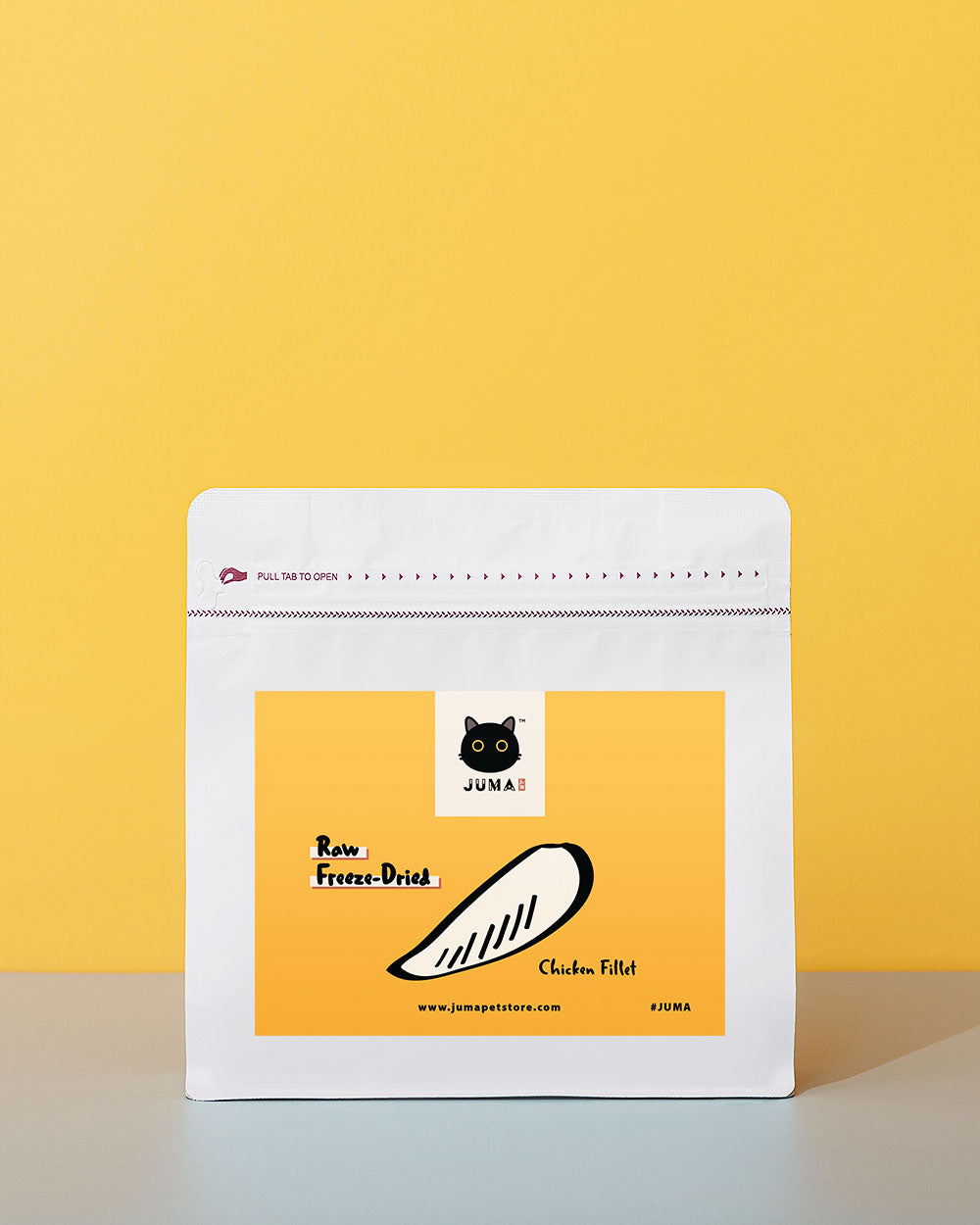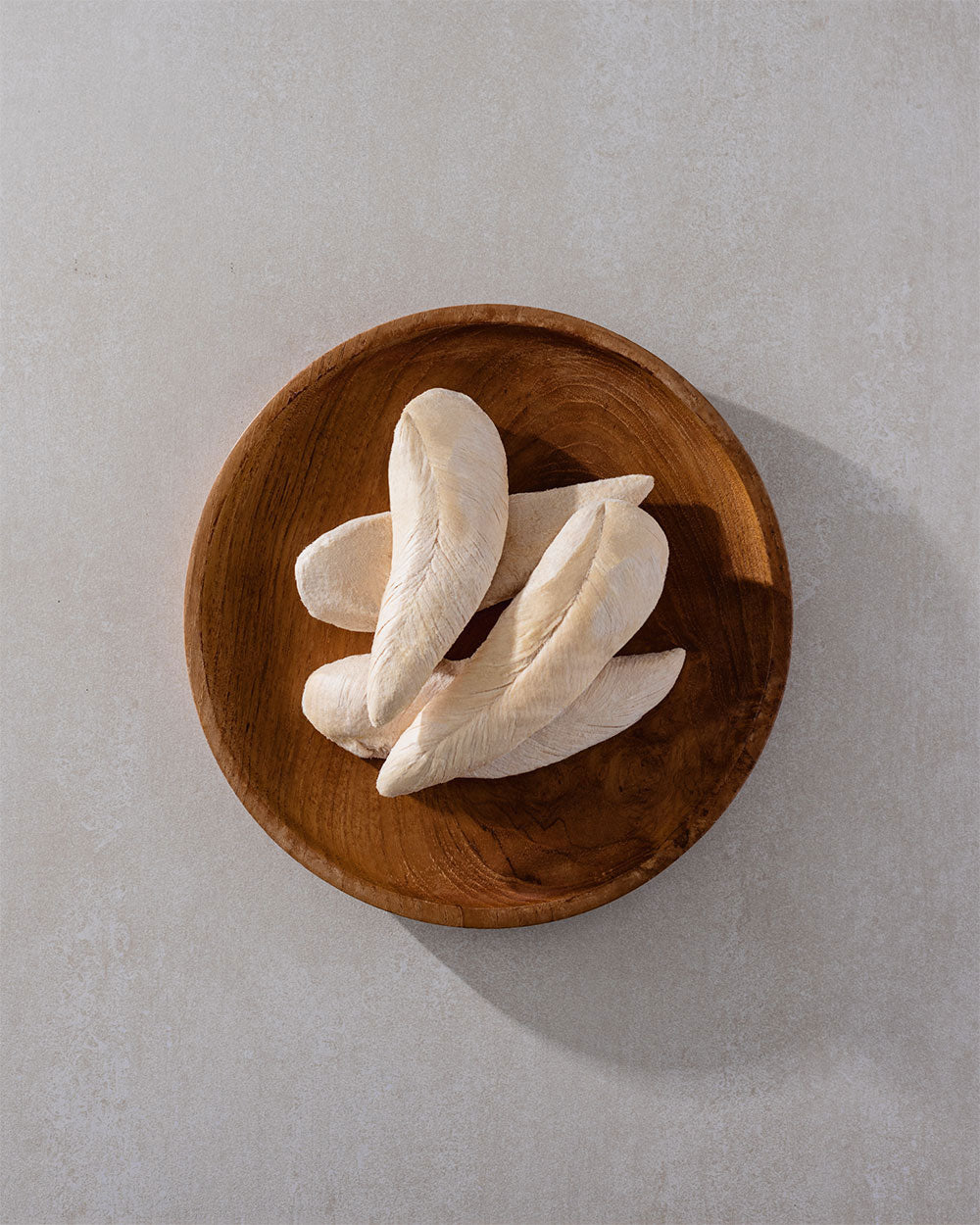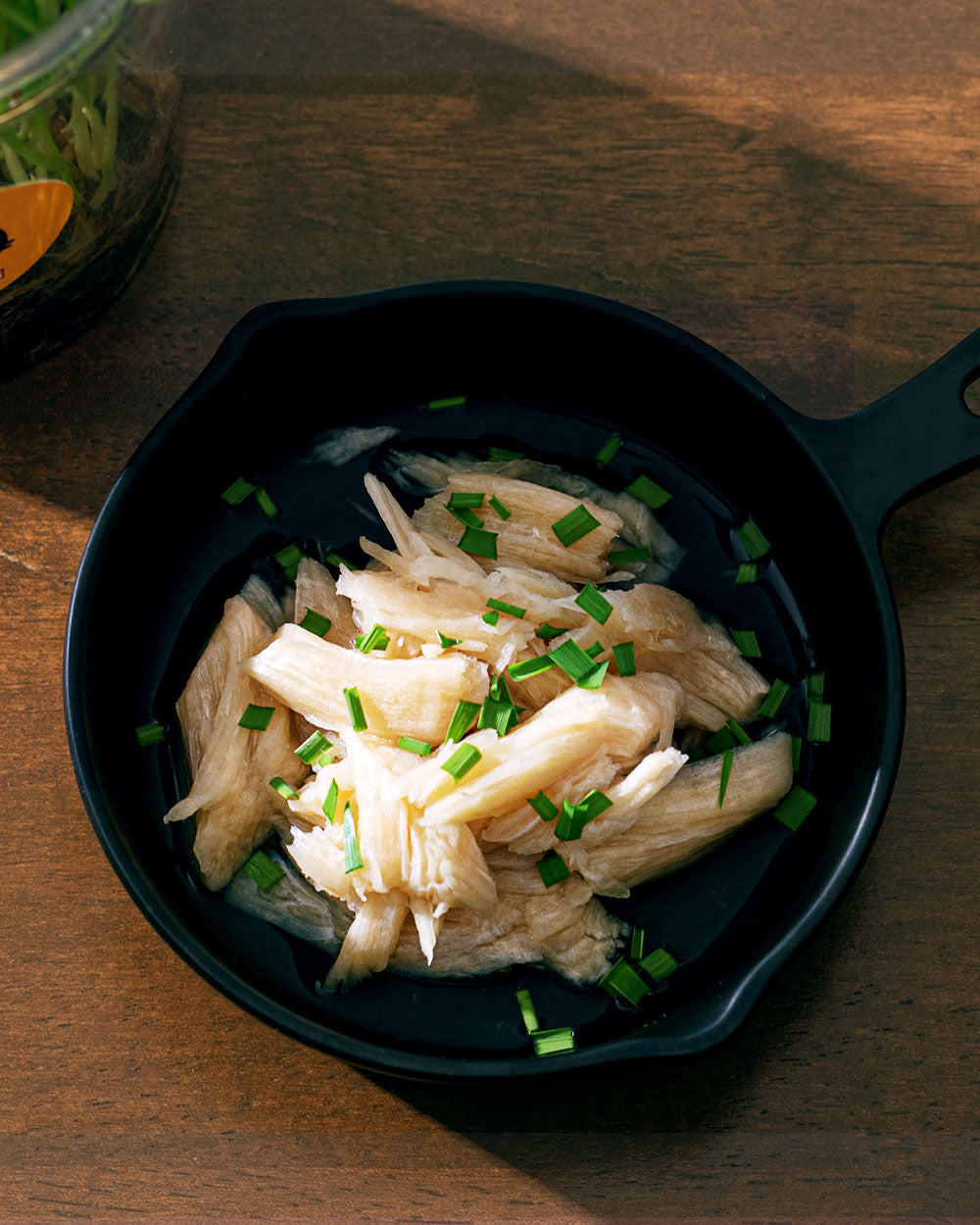JUMA
Chicken Fillet
Chicken Fillet
Suitable for all cats & dogs
Couldn't load pickup availability
Share
Chicken Fillet is a rich source of high-quality protein, essential for muscle growth and repair. It's packed with Vitamin B Complex, including B1, B2, and B6, which supports metabolism and energy production. Additionally, it contains vital minerals like phosphorus, potassium, and magnesium for strong bones and muscles.
Ingredients
Ingredients
Whole Chicken Fillet (100%)
Features
Features
- High in Protein: Chicken fillet is an excellent source of high-quality animal protein, which is essential for cats' muscle growth and maintenance.
- Low in Fat: It contains less fat compared to other parts of the chicken, such as dark meat, making it a good option for cats that are overweight or have health issues requiring a low-fat diet.
- Rich in Taurine: Chicken fillet provides taurine, an essential amino acid that cats cannot synthesize on their own and is crucial for heart health, vision, and reproductive health.
- Source of Vitamins and Minerals: It offers essential vitamins and minerals, including vitamin B6, niacin, and phosphorus, which support immune function, digestion, and overall health.
- Easy to Digest: The lean protein in chicken fillet is easy on a cat's digestive system and can be a gentle option for cats with sensitive stomachs or digestive issues.
- Supports Dental Health: The texture of the chicken fillet can help reduce plaque and tartar buildup when cats chew on it, promoting dental health.
- Versatility: Chicken fillet can be mixed with other ingredients such as cooked vegetables, rice, or broth to create a varied and balanced diet for cats.
- Nutrient Rich: It provides essential nutrients like vitamins B6 and B12, which support metabolic and nervous system functions.
- Safe for Most Cats: Most cats can tolerate chicken fillet well, making it a safe option for those with specific dietary needs or allergies.
- Can Aid in Weight Management: Due to its high protein and low-fat content, chicken fillet can help cats maintain a healthy weight.
Feeding Guide
Feeding Guide
At most 20% of daily staple food.
Storage
Storage
Store in a cool, dry place away from heat and direct sunlight. Make sure the ziplock is sealed tight at all times for maximum freshness. Best consumed within 3 months after opening.
Guaranteed Analysis
Guaranteed Analysis
- Crude Protein ≥ 75.0% (GB/T 6432-2018)
- Moisture ≤ 6.0% (GB/T 6435-2014)
- Crude Fat ≥ 2.0% (GB/T 6433-2006)
- Crude Ash ≤ 11.0% (GB/T 6438-2007)
- Escherichia coli (MPN/g) < 3.0% (GB/T 18869-2019)
300.5kcal per 100g* for reference purposes only.
After testing by authoritative organizations, this product meets the nutritional standards of GB/T.
Shipping Information
Shipping Information
Orders paid before 11pm will be fulfilled on the same day and arranged for courier pick-up on the next working day.
Estimated Delivery:
- West Malaysia: 1-3 working days
- East Malaysia & Singapore: 5-7 working days
Tracking Number:
- You can find it on your Account page upon fulfilment.
Remarks
Remarks
The grammage, color, and sizes of the products may vary due to the raw materials in every batch.



Make Feeding Fun
easy ways to feed your freeze-dried meals
-
dry food
Feed our freeze-dried directly as treats. Perfect for positive reinforcement training and bonding.
-
wet food
Rehydrate our freeze-dried in lukewarm water so it absorbs the water and becomes a healthy meal.
Highly recommended to increase your cat's daily water intake.
-
food topper
Mix our freeze-dried with your cat's food, or crumble it over the food.
Perfect for kibbles and canned food.
for first timers
-
start little, then slowly adjust accordingly
Introducing new food to cats in small amounts is crucial. It helps them acclimate to novel flavors and textures, reducing digestive stress. Monitor their reaction; if they accept it well, incrementally increase portions over a week. This approach minimizes stomach upset and identifies food sensitivities early.
-
if your cat diarrhea/vomit after freeze-dried
When a cat accustomed to eating only cat food develops diarrhoea or vomit after trying freeze-dried meat for the first time, this may be due to the cat's digestive system reacting to the new food. Ask JUMA for some suggestions to help deal with this situation.
-
not every cat shares the same love of food
Cats' tastes vary due to individual preferences, breed differences, and past experiences. Some are picky, while others are more adventurous. Health and age also influence their food choices.
-
try different feeding method - dry and wet
Introduce gradually. Start with a small piece mixed in with regular food. Monitor for interest and digestion. Increase portion slowly over a week. Offer as a reward post-meal (dry or rehydrated) or a treat during play.



